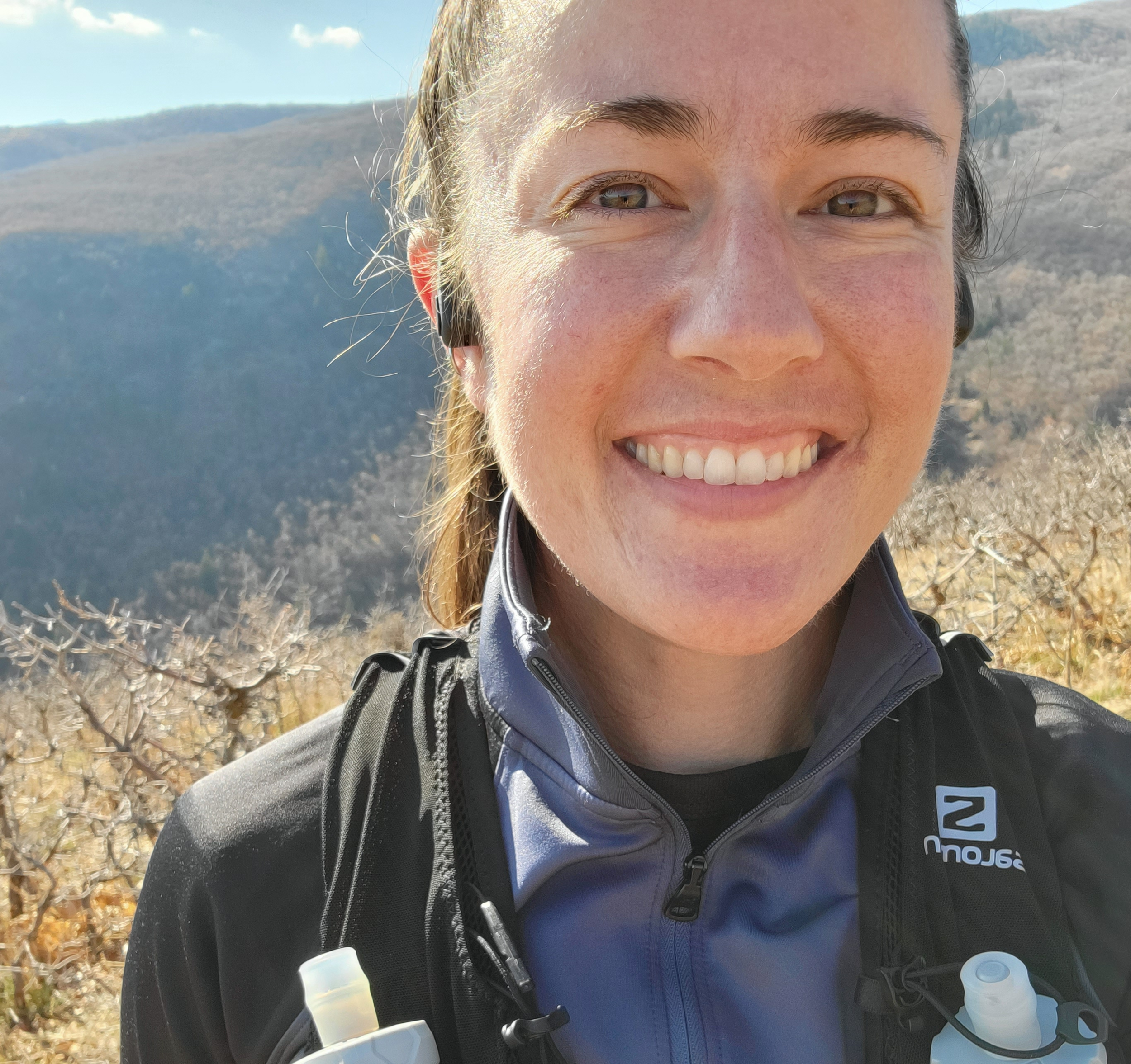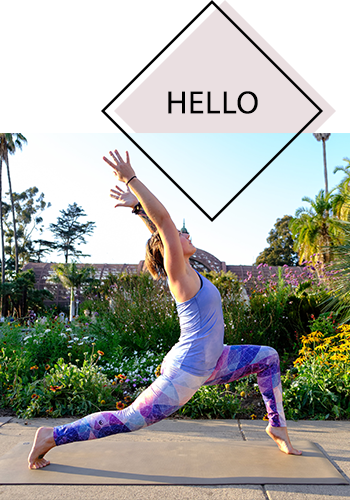Headstand
/Half the battle in headstand is overcoming fear.
What stories do you tell yourself about what you're capable of? How true are they?
I remember when I first started practicing headstand, I felt scared and hesitant. I'd try walking my hips up over my head but then back off and take child's pose. I'd watch other people in the room. In my mind, I was telling myself,
I'm weak, I can't do this, my neck isn't strong enough.
Eventually I realized that story is false. It was wrapped up in experiences I've seen other people go through-- family and friends with back and neck issues.
The reality is that I have a strong back and strong neck. A healthy spine.
I was telling myself an untrue story, rather than being present to the moment. All I needed was an open mind and to practice the balance.
Many headstands later, I now enjoy this pose.
If you're feeling stuck with an inversion (or any pose, really), try questioning your fear. Release it. Become incredibly receptive to this moment.
Mastering the Headstand Pose: Tips for Building Strength, Balance, and Confidence
The headstand pose (Sirsasana) is often called the “king of asanas” for good reason. This empowering inversion builds strength, boosts circulation, and sharpens focus. Yet for many yogis, it’s also one of the most intimidating poses to learn.
Whether you’re just starting your journey into inversions or looking to refine your technique, this guide will walk you through the essentials of headstand pose. From preparation and alignment to overcoming common fears, these tips will help you build a safe, confident, and enjoyable headstand practice.
1. Build a Strong Foundation
Before attempting headstand, it’s crucial to develop strength and stability in the muscles that support your inversion. Focus on your core, shoulders, and upper back, as these areas will carry much of your weight in the pose.
Key Prep Poses:
Dolphin Pose: This strengthens the shoulders and prepares your arms for weight-bearing.
Plank Pose: Builds overall core stability, which is essential for balance.
Forearm Plank: A variation of plank that specifically targets the muscles needed for headstand.
Boat Pose: Engages the deep core muscles and improves balance.
Tips:
Incorporate these prep poses into your regular practice to build endurance.
Focus on proper alignment in each pose to avoid overusing certain muscles.
Don’t rush! Building strength over time ensures you’ll approach headstand safely.
2. Master the Setup
Setting up correctly is half the battle when it comes to headstand. A strong, stable base will support your body and reduce the risk of injury.
Step-by-Step Setup:
Start in a Kneeling Position: Kneel on your mat and interlace your fingers to create a tripod base for your head and forearms.
Place Your Head on the Mat: Rest the crown of your head lightly on the mat, with the back of your head cradled in your hands.
Engage Your Shoulders: Press your forearms firmly into the mat and lift your shoulders away from your ears to avoid collapsing into your neck.
Lift Your Hips: Straighten your legs and walk your feet toward your head, bringing your hips over your shoulders.
Alignment Cues:
Keep your elbows shoulder-width apart; don’t let them flare out.
Distribute weight evenly between your head and forearms.
Engage your core to maintain stability as you lift your legs.
3. Practice Leg Lifts
One of the most challenging parts of headstand is lifting your legs off the ground in a controlled manner. Practicing leg lifts will help you build the necessary core strength and body awareness.
Exercises to Try:
Tuck Position: Start by lifting one leg at a time, then both knees into your chest. This reduces the lever effect and makes balancing easier.
Straight-Leg Lift: Gradually practice lifting both legs straight into the air. This requires more strength and control but improves alignment.
Wall Support: Practice near a wall for extra stability as you gain confidence.
Tips:
Move slowly and with control to prevent kicking up, which can throw off your balance.
Focus on engaging your lower belly to lift your legs smoothly.
Use the wall as a guide but aim to rely on your own strength over time.
4. Overcome Common Mistakes
Headstand is a challenging pose, and even experienced yogis can fall into bad habits. Here are some common mistakes and how to fix them:
Mistake #1: Collapsing into Your Neck
The Fix: Actively press into your forearms to lift your shoulders away from your ears. This protects your cervical spine and distributes weight more evenly.
Mistake #2: Overarching the Back
The Fix: Engage your core and tuck your tailbone slightly to maintain a neutral spine. Think of stacking your hips over your shoulders and your shoulders over your head.
Mistake #3: Relying Too Much on the Wall
The Fix: Use the wall as a training tool but don’t become dependent. Gradually move away from the wall as you build strength and confidence.
Mistake #4: Forgetting to Breathe
The Fix: Inversions can feel intense, but steady breathing helps you stay calm and focused. Practice slow, deep breaths throughout the pose.
5. Find Your Balance
Balancing in headstand requires a mix of physical strength, alignment, and mental focus. Once you’re comfortable lifting your legs, the next step is learning how to maintain stability.
Tips for Finding Balance:
Engage Your Core: A strong core is the key to holding your balance in any inversion. Think of drawing your navel toward your spine.
Fix Your Gaze: Choose a point on the floor to focus on and keep your eyes steady.
Micro-Adjust: Subtle shifts in your weight can help you stay balanced. Use your fingers and forearms to make small corrections.
Visualization:
Imagine your body as a straight line from your head to your toes. Visualizing this alignment can help you find and maintain balance more easily.
6. Stay Safe and Prevent Injuries
Safety should always come first when practicing inversions. Headstand can put pressure on your neck and spine, so it’s important to approach the pose mindfully.
Safety Tips:
Warm Up Thoroughly: Never attempt headstand without properly warming up your shoulders, neck, and core.
Avoid Overloading Your Neck: If you feel any pain or discomfort in your neck, come out of the pose immediately.
Use Props: A folded blanket under your head or forearms can provide extra support and cushioning.
When to Avoid Headstand:
If you have a neck injury, high blood pressure, or any other medical condition that might be aggravated by inversions, consult your doctor or yoga teacher first.
7. Progress Gradually
Headstand is a pose that takes time to master. Celebrate small victories along the way, whether it’s holding the pose for a few seconds or lifting one leg off the ground.
Tips for Progressing:
Set realistic goals for your practice, such as holding headstand for five breaths.
Practice consistently, but don’t overdo it. A few minutes of focused practice each day is better than long sessions that tire you out.
Document your progress with photos or journal entries to track your growth.
8. Develop the Right Mindset
Mastering headstand isn’t just about physical strength—it’s also about mental resilience. Fear of falling is one of the biggest barriers to learning inversions, but with the right mindset, you can overcome it.
Overcoming Fear:
Practice near a wall for added security as you build confidence.
Use props like a bolster or pillows to create a soft landing zone.
Remind yourself that falling is part of the process—and it’s how you learn.
Cultivating Patience:
Embrace the journey instead of fixating on the end result.
Celebrate small milestones, like holding the pose for a few seconds longer than before.
Trust that consistent effort will lead to improvement over time.
9. Incorporate Restorative Poses
Inversions like headstand can be intense, so it’s important to balance your practice with restorative poses that release tension in your neck and shoulders.
Suggested Poses:
Child’s Pose: A gentle stretch for the neck and shoulders.
Seated Neck Stretches: Relieves tightness in the cervical spine.
Reclining Bound Angle Pose: Opens the chest and promotes relaxation.
10. Seek Guidance
If you’re struggling with headstand, don’t hesitate to ask for help. A knowledgeable yoga teacher can provide personalized feedback, hands-on adjustments, and encouragement.
Benefits of Guidance:
Prevents bad habits that could lead to injury.
Helps you understand the finer points of alignment.
Boosts your confidence with tailored advice.
Conclusion: Embrace the Journey
Headstand is more than just a yoga pose—it’s a practice in patience, courage, and self-discovery. Whether you’re learning to lift your legs for the first time or refining your balance, remember that every step of the journey is worth celebrating.
Approach headstand with curiosity and a sense of playfulness. With consistent practice and the tips outlined here, you’ll not only master the pose but also build strength and confidence that will serve you on and off the mat.










Reflections on becoming a book shaman and memoir ghostwriter.
If you've walked through fire and come out transformed, your story is ready to become your legacy.